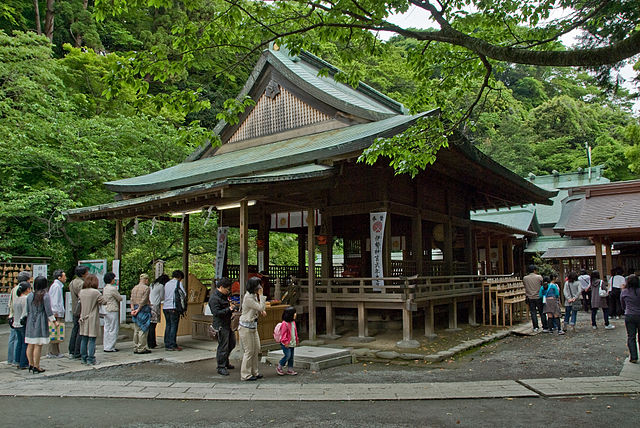Tōshō-ji (東勝寺) was the Hōjō clan's family temple (bodaiji) in Kamakura during the Kamakura period. Its founder was Taikō Gyōyū and it was constructed in 1237 by Hōjō Yasutoki in memory of his mother, who had her tomb there. According to the Taiheiki, from its foundation until the end of the Kamakura shogunate every regent (shikken) was buried there. The temple no longer exists, since it was set on fire by the Hōjō themselves when the entire family committed suicide after Nitta Yoshisada's invasion of Kamakura on July 4, 1333. Its ruins were found in the Kasaigayatsu valley in today's Ōmachi. Tōshō-ji very probably used to occupy the entire valley. Standing at the top of a narrow valley shut off at its base by the Nameri river's deep gorge and by steep hills on the other three sides, and besides offering a clear view of the only road that crossed the river, it was a fortress surely valuable to the family also from the military point of view.
The site in Kamakura where Tōshō-ji once stood
The Hōjō Takatoki Harakiri Yagura
Kamakura officially Kamakura City is a city of Kanagawa Prefecture in Japan. It is located in the Kanto region on the island of Honshu. The city has an estimated population of 172,929 and a population density of 4,359 people per km2 over the total area of 39.67 km2 (15.32 sq mi). Kamakura was designated as a city on 3 November 1939.
Image: Tsurugaoka Hachiman M8867
Image: Kamakura buddha 1
Image: Kencho ji 108599196 ac 1ef 7203f o
Image: Kamakuragu Main Hall






